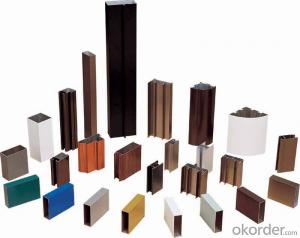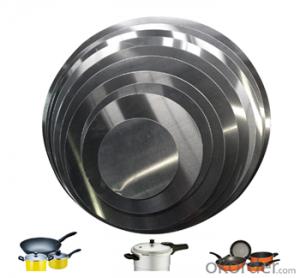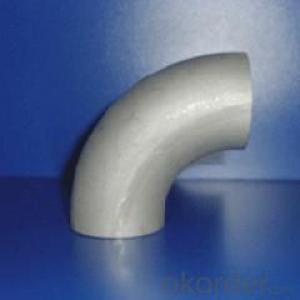High Quality Aluminum Structural Building Profiles with Good Price
- Loading Port:
- Qingdao
- Payment Terms:
- TT OR LC
- Min Order Qty:
- 10000 kg
- Supply Capability:
- 100000 kg/month
OKorder Service Pledge
OKorder Financial Service
You Might Also Like
Specification
Aluminum Discs

Aluminum Discs introduction
Our company to introduce advanced aluminum discs production equipment, effectively improve production efficiency and material utilization, shorten the delivery cycle. Our company strengthened the control of the grain size and elongation of the coil, Respectively cold rolled and hot rolled aluminum discs was launched,and cover 1, 3, 5, 8 series alloys. Complete product range, thickness 0.7-6.0 mm, diameter 100-1200 mm, tolerance in line with national standard requirements.
Aluminum Discs Features
1.Aluminum discs specifications complete,conventional size outside,can provide the most thin 0.5 mm, the most thick 6.5 mm aluminum discs;
2.Aluminum discs surface performance is good, to ensure no obvious scratches, oil, oxidation, dark spots and so on;
3.Aluminum discs thickness> 1.0 mm, to ensure that the finished side of the neat no burrs;
4.The good control of grain size and elongation in early stage,to ensure that the aluminum discs of the deep drawing and spinning performance, effectively avoid the late processing may occur when the drawing, lotus leaf, the ear rate of high bad phenomenon;
5.Strictly control the coil of the alloy, the state, performance, to ensure the accuracy and diversity of aluminum discs provided;
6.The introduction of advanced and efficient production equipment, improve the production efficiency of aluminum discs and the utilization rate of material and shorten the production cycle, provide real-time and convenient service for the customer;
7.Aluminum discs detailed classification, according to different purposes and requirements, customers can choose accurate category;
8.Products comply with RoHS and REACH the environmental protection standard;
9.Product packaging firm, in line with domestic sales and international export standards.
Introduction of our company
Our company is a professional Aluminium Strip manufacturer and Aluminum Circles manufacturers,mainly supply Aluminium Coil,Aluminum Circles,Aluminium discs,Aluminum Sheet,Aluminum Strip, Household Aluminum Foil,Aluminum Foil for Pharmaceutical Packaging,Aluminum Foil Tape,Aluminum Foil for Air Conditioner,Aluminum Foil for Container etc. series of aluminum products, sincerely welcome everyone to visit.
- Q: Can aluminum profiles be used in the construction of amusement park rides?
- Indeed, amusement park rides can be constructed using aluminum profiles. Aluminum is a favored material for building different parts of amusement park rides because of its lightweight nature and durability. The profiles can be effortlessly molded and joined together to form intricate structures like roller coaster tracks, supports, and frames for other rides. Moreover, aluminum's resistance to corrosion makes it suitable for outdoor settings where the rides are subjected to weather conditions. Furthermore, aluminum is an environmentally friendly option for amusement park ride construction as it can be recycled, showcasing its sustainability. In conclusion, aluminum profiles offer a flexible and dependable choice for creating secure and thrilling amusement park rides.
- Q: Are aluminum profiles resistant to pests or insects?
- Yes, aluminum profiles are generally resistant to pests or insects. Aluminum is a non-porous material that does not provide a suitable environment for pests or insects to nest or feed on. Unlike wood, which can be vulnerable to termite infestations, aluminum profiles are not susceptible to damage from insects. The smooth surface of aluminum makes it difficult for insects to crawl or burrow into, effectively preventing them from gaining access to the structure. Additionally, aluminum profiles are often used for windows, doors, and other entry points, and their tight seals further limit the entry of pests or insects into a building. Overall, aluminum profiles provide a durable and pest-resistant solution for various applications.
- Q: You need is the extrusion machine section now has Liaoning Zhong Wang Liaoyuan Midas Nanshan aluminum aluminum Hunan Sheng Guangxi jungle SWA South northeast light alloy etc. they have more than 4500 tons of extrusion machine mainly produces large section comprises a track body profile LED lamp shell container ship with large cross section conductor rail section I is a seamless tube a market analyst if you have aluminum industrial material need to be aware of the problem you can consult me as friends.
- 4500T is not very large extrusion machine, a little aluminum factory are generally, in the hope of Liaoning, Qinghai Guoxin, Yun ore has more than 10000 tons of production lines, more than sixty percent domestic aluminum production is Guangdong Foshan, there are several manufacturers have the production line, such as Albert, Jianmei so, need to understand the aluminum things to find the best side to understand
- Q: Is it possible to use aluminum profiles as a material for exterior walls or facades?
- <p>Yes, aluminum profiles can be used for exterior cladding or siding. They are known for their durability, low maintenance, and resistance to weather and corrosion, making them ideal for exterior applications. Aluminum profiles are lightweight, easy to install, and can be painted or finished in various ways to match architectural designs. They also offer excellent thermal performance and can be recycled, contributing to sustainability.</p>
- Q: Are there any limitations or drawbacks to using aluminum profiles?
- Yes, there are limitations and drawbacks to using aluminum profiles. One limitation is that aluminum profiles have lower strength compared to other materials such as steel. This means that they may not be suitable for applications that require high load-bearing capacity or structural integrity. Another drawback is that aluminum profiles can be more expensive than other materials. The cost of aluminum and the manufacturing processes involved in creating aluminum profiles can make them a more expensive option for certain projects. Aluminum profiles are also susceptible to corrosion, especially in harsh environments. Without proper protective coatings or maintenance, aluminum profiles can deteriorate over time, affecting their performance and lifespan. Furthermore, aluminum profiles have limited flexibility and may not be as easy to modify or customize compared to other materials. This can be a drawback in projects that require frequent alterations or adjustments. Lastly, aluminum profiles have lower thermal conductivity compared to materials like copper. This can limit their use in applications where efficient heat transfer is required, such as in some electrical or thermal management systems. Overall, while aluminum profiles offer many advantages such as lightweight, corrosion resistance, and recyclability, it is important to consider these limitations and drawbacks before choosing them for a specific application.
- Q: What are the methods to protect aluminum profiles from corrosion in environments with harsh conditions?
- <p>To prevent corrosion of aluminum profiles in harsh environments, you can apply several protective measures. First, use anodizing, a process that forms a protective oxide layer on the surface. Second, apply a protective coating such as powder coating or painting, which can provide a barrier against corrosive elements. Third, ensure proper design to prevent water trapping and facilitate drainage. Fourth, use corrosion-resistant alloys or add corrosion inhibitors to the environment. Regular inspection and maintenance are also crucial to detect and address corrosion early.</p>
- Q: Inquire if aluminum profiles can be recycled locally or regionally and how to find more information about it.
- <p>Yes, aluminum profiles can be recycled both locally and regionally. Recycling aluminum is an efficient process that conserves resources and energy. To find out more about local recycling options for aluminum profiles, you can: 1) Contact your local waste management or recycling center to inquire about their services. 2) Search online for recycling facilities in your region that specialize in aluminum. 3) Reach out to local metal scrapyards, as they often accept aluminum for recycling. 4) Check with local environmental agencies or non-profit organizations focused on recycling for guidance and resources.</p>
- Q: What are the different cross-sectional shapes available for aluminum profiles?
- There are several different cross-sectional shapes available for aluminum profiles, including square, rectangular, round, T-shaped, and I-shaped.
- Q: Can aluminum profiles be used for electrical applications?
- Yes, aluminum profiles can be used for electrical applications. Aluminum is a highly conductive material, making it suitable for electrical conductivity. Aluminum profiles are commonly used in electrical applications such as power distribution systems, wiring conduits, and bus bars. They provide a lightweight and cost-effective solution for electrical installations. Additionally, aluminum profiles offer good thermal conductivity, which helps in dissipating heat generated by electrical components. However, it is important to consider the specific requirements of the electrical application and ensure that the aluminum profiles meet the necessary electrical safety standards and regulations.
- Q: What are the noise insulation properties of aluminum profiles?
- Aluminum profiles have good noise insulation properties due to their density and ability to dampen sound vibrations. They can effectively reduce external noise and provide a quieter indoor environment.
Send your message to us
High Quality Aluminum Structural Building Profiles with Good Price
- Loading Port:
- Qingdao
- Payment Terms:
- TT OR LC
- Min Order Qty:
- 10000 kg
- Supply Capability:
- 100000 kg/month
OKorder Service Pledge
OKorder Financial Service
Similar products
Hot products
Hot Searches
Related keywords


























